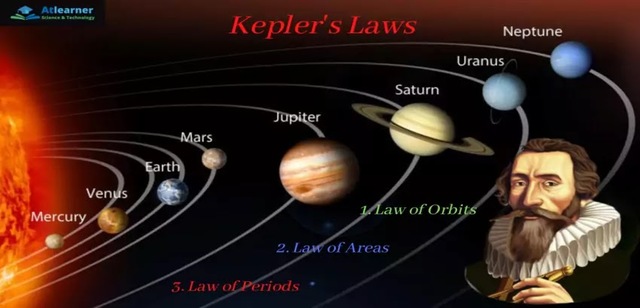Scientists have been always curious about the planets, stars, and their motion since ancient times. They also had different ideas and beliefs about that. At that time Nicholas Copernicus (1473-1543), a Polish astronomer proposed a specific planetary model of the solar system, where he stated that the sun is the center of the solar system and all the planets revolve around it.
But his theory was rejected by the Church. It is also notable that amongst its supporters was Galileo Galilei who had to face various prosecutions for his beliefs.
At the same time, a nobleman from Denmark, Tycho Brahe, spent his entire life recording the observations of the planets with the naked eye. He accumulated various information about the motion of the planet.
All of his compiled data was later analyzed by his assistant Johannes Kepler and he arrived at three elegant laws of planetary motion. Now, these laws are very popular which is known as Kepler’s laws of planetary motion.
What Are Kepler's Laws Of Planetary Motion?
To describe the motion of the planets Kepler arrived at three elegant laws of planetary motion. These are the Law of Orbits, Law of Areas, and Law of Time Periods.
Kepler's First Law Of Planetary Motion?
First Law: It is the Law of orbits
Statement: Each planet revolves in an elliptical orbit around the sun, and the sun is in the focus of that ellipse.
From this law, we know the geometrical shape of the orbits. According to Kepler's first law, all the planets revolve in an elliptical orbit around the sun. These elliptical orbits of a planet are responsible for the occurrence of seasons.
The point in this ellipse where the planet is closest to the sun is called the perihelion(P) and the point at which the planet is farther from the sun is called the aphelion(A).
Kepler's Second Law Of Planetary Motion?
Second Law: It is the Law of areas
Statement: The straight line connecting the sun and a planet crosses equal areas in equal intervals of time.
Kepler's Third Law Of Planetary Motion?
Third Law: It is the Law of periods
Statement: The square of the time period of the revolution of a planet around the sun in an elliptical orbit is directly proportional to the cube of the semi-major axis of the ellipse.
Kepler's 3rd Law From Newton's Law Of Gravitation?
If the orbits of the planets are circular, then the semi-major axis is equal to the semi-minor axis which is equal to the radius of the orbit. So we can find that the square of the period is proportional to the cube of the radius of the orbit.
Let a planet that is revolving around the sun in a circular orbit of radius r. So the time period T of the planet in a single revolution around the sun can be written as
Here the distance travel by the planet is the perimeter of the orbit that is 2𝜋r and v is the velocity of the planet.
If the mass of the sun is M and the mass of the planet is m then the gravitational attraction between the sun and the planet can be written as
(Where G is the gravitational constant)
And the centripetal force required in the revolution of the planet can be written as
This necessary centripetal force that is required in the revolution of the planet is provided by the gravitational attraction, so
Now if we substitute the value of v in equation no-(1) we get the time period
When we take the orbit as a circle instead of an ellipse, the semicircular axis (a) of the ellipse becomes the radius (r) of the circle.




Post a Comment (0)